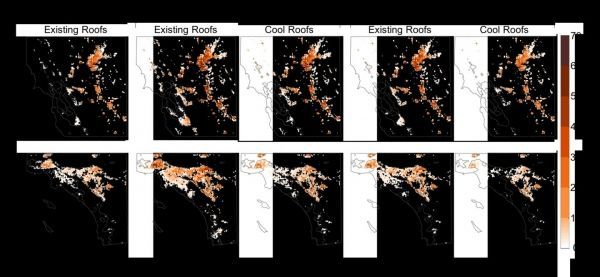This summer alone, intense heat waves have been to blame for at least 11 deaths in Japan, a record-breaking 45.9-degree Celsius temperature in France, and a heat advisory affecting 147 million people on the U.S. East Coast. Conjectured as the “new normal,” these extreme air temperatures can heat our bodies, causing sunstrokes or even organ damage.
A new study by researchers at the Department of Energy’s Lawrence Berkeley National Laboratory (Berkeley Lab) shows that if every building in California sported “cool” roofs by 2050, these roofs would help contribute to protecting urbanites from the consequences of these dangerous heatwaves. Their study, “Interacting implications of climate change, population dynamics, and urban heat mitigation for future exposure to heat extremes,” was recently published in the journal Environmental Research Letters.
The researchers predict that heat waves are likely to become two to 10 times more frequent across the state by mid-century. But if cool roofs were adopted throughout California’s most populous areas – the San Francisco Bay Area, Los Angeles, San Diego, and Sacramento – by 2050 these reflective roofs could bring down heat wave exposures (defined as each time a person experiences a heat wave) by 35 million each year, compared to an estimated 80 million heat wave cases in 2050 with no increase in cool roof adoption. This is the latest example of Berkeley Lab’s research into the potential for reflective roofs, walls, and pavements to mitigate urban heat, reduce air conditioning usage, and save water.
Read more at: Berkely Lab
In this study, a heat wave consists of at least three consecutive days with maximum air temperature of 35 C or higher. The simulation above illustrates the extent to which cool roofs could reduce annual population exposure to heat waves in Northern and Southern California in mid-century under hot and warm scenarios, driven by high greenhouse gas emissions and more modest emissions, respectively. (Photo Credit: Berkeley Lab)


